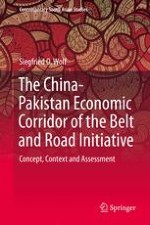
2020 | OriginalPaper | Buchkapitel
1. Introduction
verfasst von : Siegfried O. Wolf
Erschienen in: The China-Pakistan Economic Corridor of the Belt and Road Initiative
Verlag: Springer International Publishing
Aktivieren Sie unsere intelligente Suche, um passende Fachinhalte oder Patente zu finden.
Wählen Sie Textabschnitte aus um mit Künstlicher Intelligenz passenden Patente zu finden. powered by
Markieren Sie Textabschnitte, um KI-gestützt weitere passende Inhalte zu finden. powered by